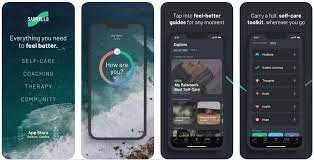Many college students may be suffering from untreated mood disorders. Recent studies done by the National Alliance on Mental Illness (NAMI), show that young adults between the ages of 18 and 34, who have mood disorders, are not receiving the mental health care they need. More specifically, on behalf of NAMI, The Harris Poll conducted the 2021 Mood Disorder Survey. The targeted age group for this survey, between 18 and 34, overlaps with the typical ages of college students.
A study done by The Hamilton Project entails that 80 percent of college students are between ages 18 and 24 and more than 20 percent of college students are over 24. These statistics align and can integrate as the average college-age is within the young adult spectrum. Therefore, it is more than likely, college students were observed during this study. This study found the barriers, in other words, the reasons why young adults continue to suffer from mood disorders with no help.
The word depression gets thrown around loosely nowadays. Especially in the age of social media where some people cannot help but post their feelings for likes. Some circumstances are exaggerated, some are false, and some are certainly accurate. All of these instances are rooted in the yearning for a reaction, in this case, a reaction from their followers. The New York Times confirms this as they broke down the psychology of sharing their lives and concluded that 62 percent of people say they feel better about themselves when people react positively to what they post on social media.
The 2021 Mood Disorder Survey conveys depression is more than a feeling or emotion to be shared on social media, it is a serious mood disorder just as significant as bipolar disorders and major depressive disorders. Such disorders young people endure cause their overall mental health to be much more negative. The survey concludes that 93 percent of people from 18-to 24 found their mood disorders caused a burden to their mental health as a whole.
Along with young people not taking their mental health seriously, there is the issue of not being able to access affordable treatment. NAMI found that 68 percent of 18-24-year-olds encountered times when they were willing to receive treatment but simply could not afford it. Receiving help can be costly, especially while these young people are just beginning adulthood. So investing their money in a psychiatrist or therapist while trying to start their life or take care of their newfound responsibilities can be a struggle. According to the Electronic Health Reporter, an initial consultation is between $300 and $500, then each session is about $200. This does not include the additional costs of treatments as well. These numbers eventually add up.
Another painful issue is the fear of being judged for getting the help they need. There is a stigma surrounding mental health and seeking help for it because of the judgment of others. This leads to young people putting themselves last, all because of the opinions of others. NAMI found that 38 percent of the respondents, ages 18-24, went without treatment despite wanting it due to the judgment of others.
These issues are roadblocks and will continue to stop young adults from getting better mentally unless they put a stop to their misery. An exceptional way to break down these barriers is by downloading the mobile application Sanvello: Anxiety and Depression. Sanvello, originally named Pacifica, was launched in 2015. This Editors’ Choice award-winning application incorporates proven therapies within its app to assure productivity for its users. These therapies include Cognitive Behavioral Therapy (CBT) and Mindfulness Meditation.

Sanvello is made up of four core components, Self-Care, Community, Therapy, and Coaching. These tools work together to provide relief to the user, decreasing their anxiety and depression. The self-care portion of the app offers assessments which track depression, anxiety, and stress scores. This way, users can acknowledge and reflect on what is bothering them. Young people, especially college students could utilize this tool to face their issues and see how it affects their mood on a day-to-day basis.
The community part of the application emphasizes how Sanvello ensures their user does not feel alone. Users become much calmer and alleviated when they learn from other Sanvello users who share similar experiences and shed light on their struggles to help others. This exchange of knowledge occurs through anonymously active discussion boards and chat groups. College students could certainly benefit as they will not have to resort to social media to get reactions, instead, they can have discussions with those who can understand and provide insight. There is no judgment either.
Therapy provided in Sanvello gives the user control in scheduling online appointments. Once assigned with the therapist, there is no rush in healing, it is all about progressing through the user’s journey. The therapists for Sanvello are dedicated to building solid relationships with their patients. College students can use their health plan to cover their sessions, so cost is not a huge concern.
The coaching feature in Sanvello is an automatic built-in friend. This special friend is a real person whose role is to motivate, support, and advise as they are trained in cognitive behavior change. With their advice and knowledge of Sanvello, coaches work to help the users.

These coaches communicate through messaging and live classes which guide users on how to implement the concepts of CBT into their life. College students can take advantage of having a coach in case the stigma scares them into not wanting to divulge their feelings to their friends or family. Users are promised a judgment-free zone while using Sanvello, especially when communicating with their coach.
All of these pieces of Sanvello make sure the user is taking their mental illness seriously. As they do, there are no concerns of stigma and no unaffordable therapy.
Sanvello ensures there is nothing stopping users from building up a healthier mind. A healthier mind is crucial, especially while navigating mood disorders. An application of empathy is what Sanvello proves to be as it caters to its users.



